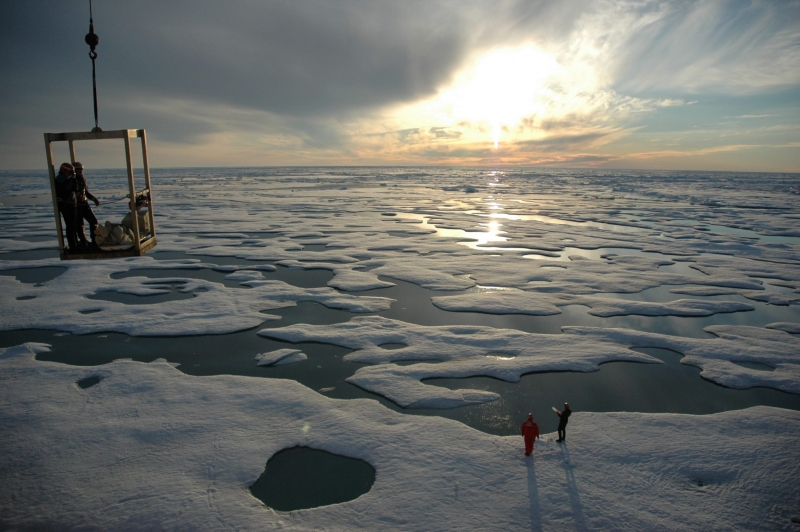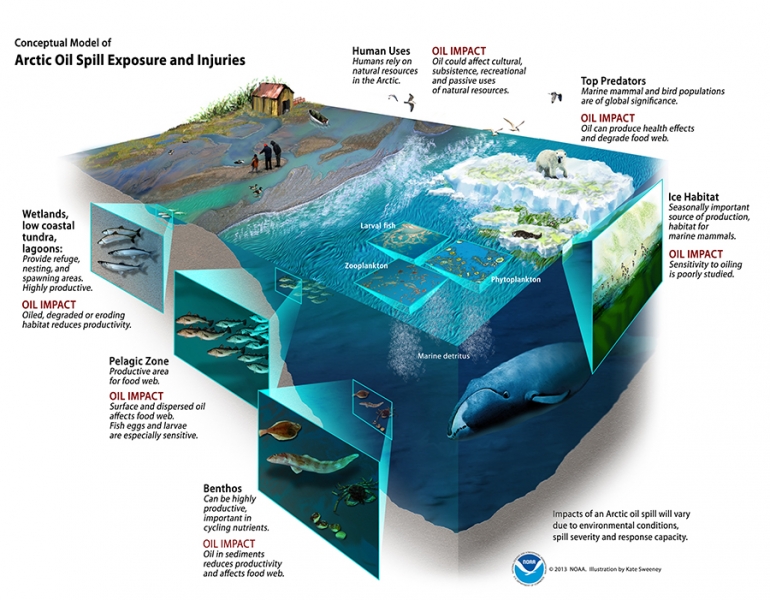
Last week, the Administration hosted the first White House Arctic Science Ministerial. The gathering of science ministers, chief science advisers, and additional high-level officials from countries worldwide, as well as indigenous representatives, provided an opportunity to discuss Arctic science, research, observations, monitoring, and data-sharing. Discussion topics included:
- Identifying Arctic science challenges and their regional and global implications
- Strengthening and integrating Arctic observations and data sharing
- Applying expanded scientific understanding of the Arctic to build regional resilience and shape global responses
- Empowering citizens through Science Technology, Engineering, and Mathematics (STEM) education leveraging Arctic science
These issues are deeply entrenched in the work of NOAA’s Office of Response and Restoration (OR&R). Rising temperatures and thinning sea ice in the Arctic creates more opportunities for human activities that increase the threat of oil and chemical spills in a remote region that presents unique challenges.
As the lead science advisor to the U.S. Coast Guard (USCG) during oil and hazardous material spills, OR&R provides both preparedness training and support during spills. In August, OR&R participated in an Alaska North Slope oil spill drill, conducting Shoreline Cleanup Assessment Technique surveys, relaying information to the Incident Command Post in Anchorage, and sharing operational and environmental information using the Arctic Environmental Response Management Application (ERMA).
OR&R also conducts assessments of natural resources damaged by spills and often participates in exercises for such activities. In 2014, OR&R released Guidelines for Collecting High Priority Ephemeral Data for Oil Spills in the Arctic in Support of Natural Resource Damage Assessments. In May, OR&R and the NOAA Restoration Center led a tabletop drill and management training for the Alaska Natural Resource Damage Assessment and Restoration trustees.
OR&R’s Arctic work is not restricted to domestic activities. OR&R’s Spatial Data Branch Chief Dr. Amy Merten currently serves as chair of the Arctic Council’s Emergency Prevention, Preparedness, and Response Working Group, and OR&R frequently participates in international meetings and exercises. A few weeks ago, OR&R participated in an international cooperative information exchange with Canada and Norway hosted by USCG. Staff reviewed the use of Arctic ERMA and presented the Arctic Dispersant State of the Science initiative in coordination with the University of New Hampshire’s Coastal Response Research Center.
As the protection of Arctic natural resources and coastal communities gain increased attention, OR&R will continue to prepare and support partners with innovative science, tools, and services.

Learn more about NOAA and oil spills, including challenges in the Arctic.
Learn more about the White House Arctic Science Ministerial.

